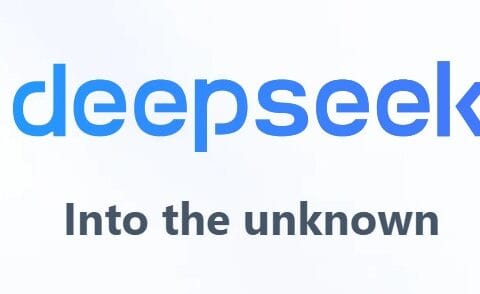Last Updated on May 9, 2024 1:40 pm by Laszlo Szabo / NowadAIs | Published on May 9, 2024 by Laszlo Szabo / NowadAIs
Microsoft MAI-1 AI Model: The ChatGPT-4 Challenger in House? – Key Notes
- Introduction of Microsoft MAI-1: An advanced large language model developed to elevate Microsoft’s position in the AI industry.
- Strategic Development: MAI-1 is a strategic initiative following Microsoft’s significant investment in OpenAI, aimed at establishing Microsoft as a leader in AI innovation.
- Impressive Scale: Boasts an estimated 500 billion parameters, positioning it as a strong competitor to OpenAI’s GPT models.
- Expert Leadership: Led by Mustafa Suleyman, a prominent AI figure, ensuring expert guidance in the development of MAI-1.
- Integration of Inflection’s Innovations: Incorporates technology and training data from the recently acquired startup Inflection AI.
- Broad Application Potential: Expected to enhance Microsoft’s consumer products and Azure cloud services among other applications.
Introduction
The tech giants are engaged in an intense battle for AI supremacy. While Microsoft has long been a key player in this arena, its latest venture, codenamed MAI-1, is poised to shake up the industry. This in-house large language model (LLM) is Microsoft’s bold step towards challenging the dominance of industry leaders like OpenAI, Google, and Anthropic.
The Catalyst Behind MAI-1
According to The Information Microsoft’s decision to develop MAI-1 is a strategic move that comes on the heels of its substantial investment in OpenAI. The tech giant has poured over $10 billion into the startup, securing the rights to utilize its cutting-edge AI models, including the renowned GPT-4. However, the company’s ambitions extend beyond merely leveraging OpenAI’s technology. By creating its own state-of-the-art LLM, Microsoft is signaling its intent to become a self-sufficient AI powerhouse, capable of driving innovation and shaping the future of the industry.
The Mastermind Behind MAI-1
Overseeing the development of MAI-1 is Mustafa Suleyman, a renowned figure in the AI community. Suleyman, a former Google AI leader, recently joined Microsoft after serving as the CEO of the AI startup Inflection. His expertise and industry experience have been instrumental in shaping the vision and direction of MAI-1.
The Scale and Capabilities of MAI-1
At the heart of MAI-1 lies its impressive scale. With an estimated 500 billion parameters, the model is significantly larger than Microsoft’s previous open-source offerings, such as the Phi-3 Mini, which boasts 3.8 billion parameters. This massive scale positions MAI-1 as a serious contender against industry heavyweights like OpenAI’s GPT-4, which is rumored to have over 1 trillion parameters.
Leveraging Inflection’s Expertise
While MAI-1 is a Microsoft-developed model, the company has drawn upon the expertise and resources of the recently acquired Inflection AI. Though the model is not a direct carryover from Inflection, it is believed to incorporate some of the startup’s training data and technological advancements. This strategic integration of talent and intellectual property further strengthens Microsoft’s AI capabilities.
Hedging Bets in the AI Landscape
The development of MAI-1 suggests that Microsoft is adopting a dual-pronged approach to AI. While the tech giant continues to collaborate with OpenAI and leverage its models, the creation of an in-house LLM indicates a desire to diversify its AI portfolio. This move may also be a response to the growing regulatory scrutiny surrounding Microsoft’s existing AI deals, as the company seeks to maintain control over its own technology.
Potential Applications and Use Cases
The exact purpose and intended use cases of MAI-1 remain largely undetermined, as the model is still in development. However, its sheer scale and capabilities suggest a wide range of potential applications, from powering Microsoft’s own AI-driven services to integration within the company’s cloud offerings, such as Azure. Additionally, MAI-1 could play a pivotal role in enhancing Microsoft’s consumer-facing products, including the Copilot chatbot integrated into Windows 11.
Conclusion
Microsoft’s MAI-1 represents a bold and strategic move in the ever-evolving landscape of artificial intelligence. By developing its own large language model, the tech giant is not only challenging industry leaders but also positioning itself as a self-sufficient AI innovator.
As the race for AI dominance continues, the success of this ambitious project will undoubtedly be a key factor in shaping the future of Microsoft and the broader technology industry.
Definitions
- Microsoft MAI-1 AI Model: A state-of-the-art large language model developed by Microsoft, designed to compete with the leading AI models in the industry.
- Microsoft: A global technology company known for its significant contributions to the development of personal computing, software, and digital services.
- ChatGPT: An AI developed by OpenAI that specializes in generating human-like text based on the input it receives.
- OpenAI: An AI research lab that develops advanced AI models like GPT, focusing on ensuring that artificial general intelligence (AGI) benefits all of humanity.
- Antropic: An AI safety and research company that focuses on building reliable, interpretable, and steerable AI systems.
- Infection AI: Typically refers to AI models designed to detect, predict, and analyze infectious diseases, though it’s not detailed in this context.
- Phi-3: A smaller scale AI model previously developed by Microsoft, known for its efficiency and smaller parameter count compared to giants like GPT-4.
- AI Training Parameters: Numerical settings and values that define how an AI model learns during its training process.
- Microsoft Azure: Microsoft’s cloud computing service that offers building, testing, deploying, and managing applications and services through Microsoft-managed data centers.
Frequently Asked Questions
- What sets the Microsoft MAI-1 AI Model apart from other AI models? The Microsoft MAI-1 AI Model is distinguished by its massive scale of 500 billion parameters and its development under the leadership of AI expert Mustafa Suleyman. This positions it as a formidable competitor in the AI space, aiming to enhance Microsoft’s product offerings and cloud solutions.
- How does Microsoft’s MAI-1 AI Model improve upon its predecessors like Phi-3? Unlike the smaller Phi-3, MAI-1 boasts a significantly larger parameter count, which enables more complex and nuanced understanding and generation capabilities, making it suitable for a wider range of applications in technology and AI-driven services.
- What potential applications does Microsoft envision for the MAI-1 AI Model? Microsoft sees MAI-1 enhancing its consumer products, such as integrating with Windows Copilot, and bolstering its Azure cloud services. Its extensive capabilities also suggest potential uses in enterprise solutions and AI-driven analytics.
- How will Microsoft’s MAI-1 AI Model impact the AI industry? Microsoft’s MAI-1 is set to challenge the dominance of established AI players like OpenAI and Google by offering a robust alternative that could shift the balance of power in AI technologies and cloud-based AI solutions.
- What are the future developments expected for Microsoft’s MAI-1 AI Model? Future developments for MAI-1 may include advancements in AI safety features, more effective integration with various digital and cloud platforms, and enhancements that allow even more precise and efficient AI functionalities across diverse sectors.









